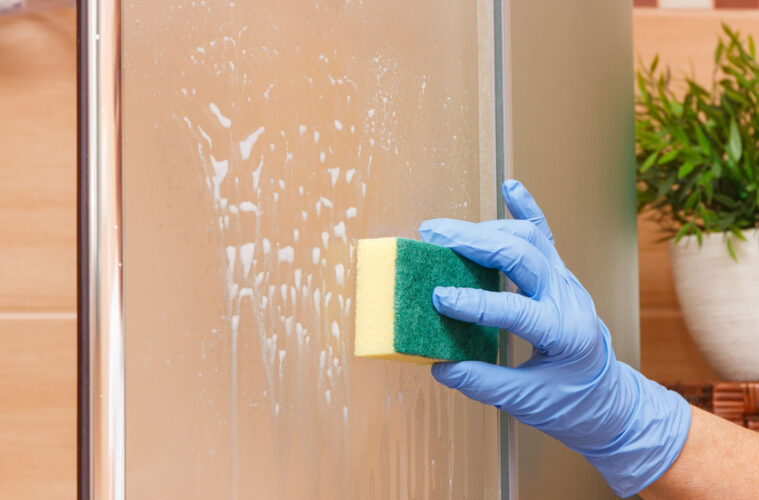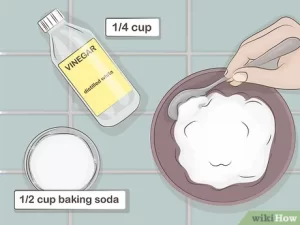
Unveiling the Brilliance: A Comprehensive Guide on How to Get Soap Scum Off Shower Doors
Introduction
Shower doors, while essential for preventing water splashes, often bear the unsightly burden of soap scum. This cloudy residue can dull the appearance of your shower and pose a cleaning challenge. Fear not, as we embark on a detailed journey to explore effective methods and tips on how to get soap scum off shower doors, leaving them crystal clear and gleaming.
Understanding Soap Scum on Shower Doors
Soap scum is a result of the interaction between soap and hard water minerals. Over time, it forms a stubborn film on shower doors, making them appear dull and unclean. Tackling soap scum requires the right approach and a combination of cleaning agents to dissolve and remove the residue.
Materials Needed
Before we dive into the cleaning process, gather the following materials:
- White Vinegar: A powerful acid that dissolves soap scum.
- Baking Soda: An abrasive for scrubbing without scratching.
- Dish Soap: Effective in cutting through grease and grime.
- Lemon Juice: Contains citric acid for added cleaning power.
- Microfiber Cloth or Sponge: Ideal for gentle scrubbing.
- Rubber Gloves: Protect your hands during the cleaning process.
- Squeegee: Helps maintain the cleanliness of shower doors.
- Plastic Scraper or Old Credit Card: Removes stubborn buildup without scratching.
- Shower Door Cleaner (Optional): Commercial cleaners formulated for soap scum removal.
Step-by-Step Cleaning Guide
1. Pre-Cleaning Preparation
Start by removing any items from the shower area, such as shampoo bottles or loofahs. This provides better access to the entire surface of the shower door.
2. Dry Removal of Loose Debris
Use a dry cloth or sponge to wipe away loose debris and surface dust. This initial step prevents scratching when cleaning with liquids or abrasive materials.
3. Vinegar and Water Solution
Create a solution of equal parts white vinegar and water in a spray bottle. Liberally spray the entire shower door, ensuring the solution covers areas affected by soap scum.
4. Let the Solution Sit
Allow the vinegar and water solution to sit on the shower door for at least 15 minutes. This gives the acid in the vinegar time to break down the soap scum.
5. Baking Soda Scrub
Make a paste by mixing baking soda with a small amount of water. Apply the paste to a microfiber cloth or sponge and gently scrub the shower door in circular motions. Baking soda acts as a mild abrasive, aiding in the removal of soap scum.
6. Dish Soap Boost
Apply a small amount of dish soap to the scrubbing tool (cloth or sponge) and continue scrubbing the shower door. Dish soap helps cut through grease and any remaining soap scum.
7. Lemon Juice Application
For an extra boost, squeeze fresh lemon juice onto the shower door. Lemon juice contains citric acid, which provides additional cleaning power and leaves behind a fresh scent.
8. Rinse Thoroughly
Use clean water to rinse the entire shower door thoroughly. Ensure all traces of the cleaning solutions are removed to prevent any residue buildup.
9. Squeegee for Ongoing Maintenance
Invest in a squeegee and use it after each shower. This simple tool helps prevent soap scum by removing excess water and soap residue from the glass.
10. Plastic Scraper for Stubborn Areas
For persistent soap scum or mineral deposits, use a plastic scraper or an old credit card. Gently scrape the surface, applying minimal pressure to avoid scratching the glass.
11. Optional Commercial Cleaner
If homemade solutions prove insufficient, consider using a commercial shower door cleaner designed specifically for soap scum removal. Follow the product’s instructions for the best results.
Frequently Asked Questions
1. How does soap scum form on shower doors?
Soap scum forms when the fatty components of soap combine with minerals in hard water. This reaction results in a stubborn film on shower surfaces.
2. Is it safe to mix vinegar and baking soda for cleaning?
Yes, it is safe to mix vinegar and baking soda. The combination creates a foaming reaction that helps break down soap scum. However, mix them in a bowl before applying to surfaces.
3. How often should I clean my shower doors to prevent soap scum buildup?
Regular maintenance is key. Wiping down shower doors after each use and performing a deep clean every two weeks can prevent soap scum from becoming stubborn.
4. Can I use a steel wool pad on shower doors to remove soap scum?
Avoid using steel wool or other abrasive pads, as they may scratch the glass. Stick to softer materials like microfiber cloths or sponges.
5. What if the soap scum persists after cleaning attempts?
For persistent soap scum, repeat the cleaning process or try increasing the concentration of vinegar in your solution. Patience and consistency are crucial.
6. Is it necessary to wear gloves during the cleaning process?
Wearing rubber gloves is recommended to protect your hands from the cleaning solutions and potential skin irritation.
7. Can I use apple cider vinegar instead of white vinegar?
While apple cider vinegar has some cleaning properties, white vinegar is preferred for its clarity and higher acidity.
8. Should I avoid using soap on shower doors to prevent soap scum?
Soap is a natural culprit for soap scum, but avoiding it is impractical. Instead, focus on regular cleaning and maintenance to prevent buildup.
9. Can I use a glass cleaner for soap scum removal?
Some glass cleaners are formulated for soap scum removal. However, ensure they are suitable for shower doors and follow the manufacturer’s instructions.
10. How do I prevent water spots on shower doors after cleaning?
After cleaning, thoroughly dry the shower doors with a clean, dry microfiber cloth or squeegee to prevent water spots and streaks.
Conclusion
Revel in the brilliance of crystal-clear shower doors by mastering the art of removing soap scum. Armed with natural cleaning agents and the right tools, you can bid farewell to cloudy residues and welcome back the gleam to your shower sanctuary. Follow the steps outlined in this comprehensive guide, and let your shower doors shine like new, enhancing the overall appeal of your bathroom.


